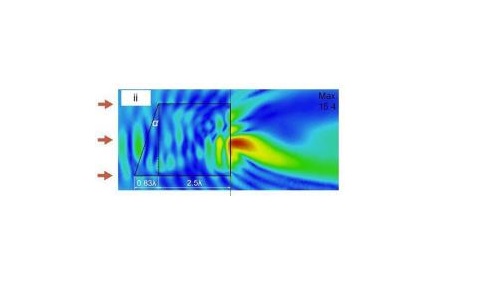21 March 2018
Dr Liyang Yue at School of Electronic Engineering is the lead author of a paper recently published in the scientific journal "Optics Letters” which reports on a new way to produce a curved light beam, and which has created some interest among scientists since its recent publication.
The new type of curved light beam (one called the ‘Airy beam’ already exists), which the researchers have named the “photonic hook” could have important future applications such being used to as trap or move particles in microfluidic on-chip devices, miniaturization of photonic components and circuits, enhancement of terahertz signal for communication and imaging uses and even for guiding electric arcs such as lightning.
On release, MIT Technology Review, a Massachusetts Institute of Technology (MIT) magazine, immediately listed the paper as the best paper in January’s arXiv database, at Cornell University, which is the world's premier e-print repository in physics, math, computer science and related disciplines, and the most interesting preprints in its weekly review. After official publication, it also became the journal website’s top download.

Dr Liyang Yue said: "I am very excited to discover the ‘photonic hook’ phenomenon using the latest numerical simulation technology initiated by Profs Igor V Minin and Oleg V Minin in collaboration with scientific groups from Bangor, Tomsk, and ITMO universities. Our new curved light beam - the ‘photonic hook’ is a bent light beam introduced by an asymmetrically non-spherical particle-lens, so its property is more inclined to the normal light in our common sense, despite surprisingly, having a curved configuration. Compared to the existing curved light - Airy beams, which are initialised by a bulky laser paired with an expensive spatial light modulator (SLM), the photonic hook can be generated using a relatively easy experimental setup, just particles and a light source. We believe that the photonic hook is helpful to better explain the scattering in some special cases and more convenient for embedding in existing optical systems.”
He added: “I am thankful for the supports from the School of Electronic Engineering, Bangor University and Sêr Cymru National Research Network. How to design an experiment to precisely control the form or curvature of a photonic hook could be the next topic for me and my Russian collaborators."













